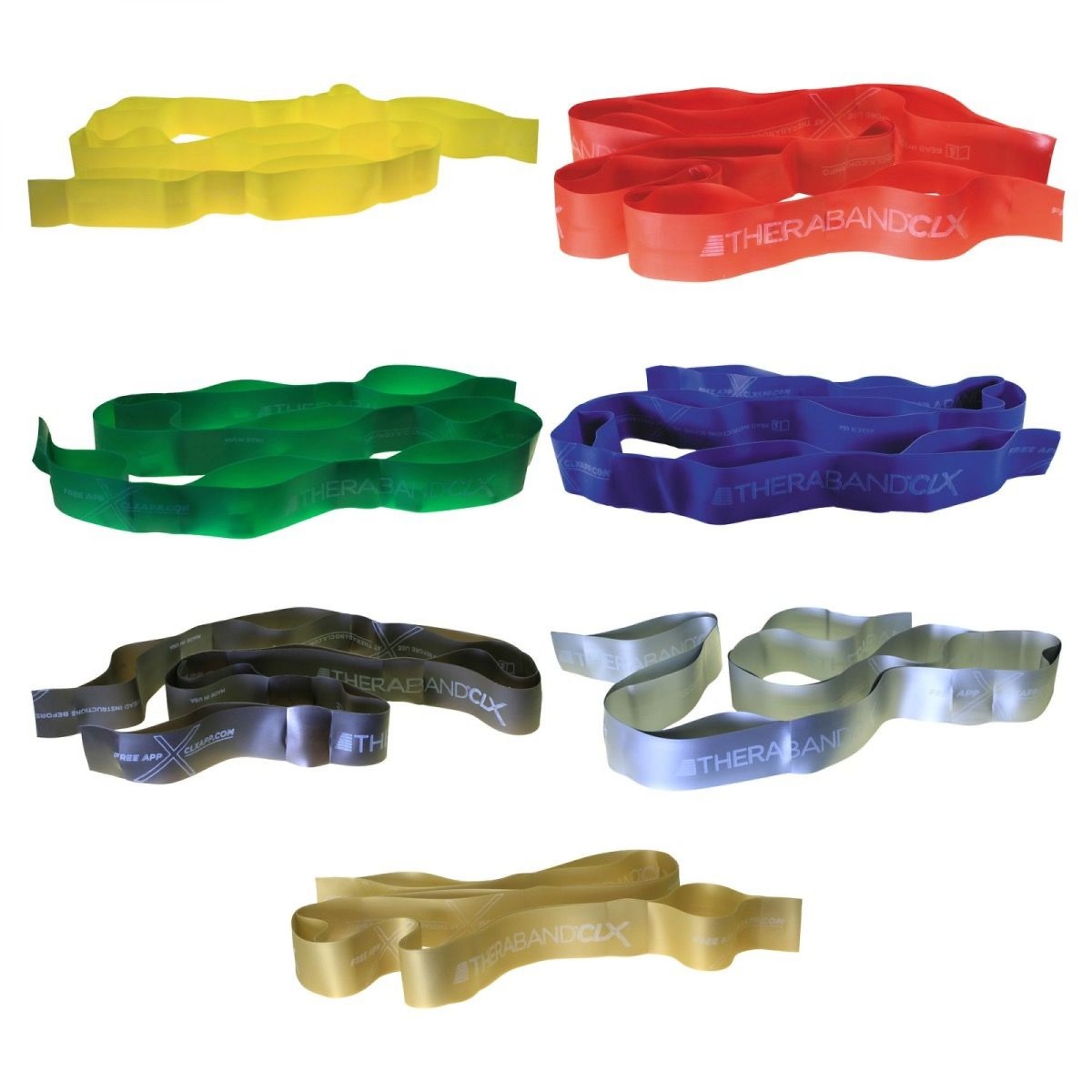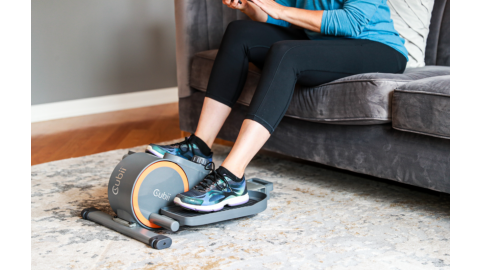Sleep and exercise go hand-in-hand more than you may think. It is no surprise that when you get into bed at the end of the day, you may feel restless and unable to relax. Your muscles need activity for proper circulation.¹ If you’re sitting hunched at your computer or stressed out in traffic, your aching muscles will need some help at the end of the day to relax.
Even athletes can overlook how sleep affects their workout and recovery. Every bit of exercise from stretching to meditation can help you feel better during the day and sleep better at night. So how exactly does exercise before bed help your sleep?
Learn more about how adding nightly exercise can help your sleep and find a few exercises you can add to your routine!
Key Takeaways
-
Exercise can improve sleep and your health in more ways than one.
-
Stress and strain throughout the body can be improved by using a good pillow to help with body positioning while sleeping.
-
Evening exercise can help people fall asleep faster.
Table of Contents
How Can Exercise Improve Sleep?
When is the Best Time to Exercise?
Start a Nightly Workout Routine Before Bed
How Can Exercise Improve Sleep?
- Improve Sleep Quality: Exercise helps increase time spent in deep sleep, the most restorative sleep phase. Deep sleep helps to boost immune function, support cardiac health, and control stress and anxiety.¹
- Increase Sleep Amounts: Being physically active requires you to consume more energy, which makes you feel more tired. Yoga is a great end-of-day exercise, as it helps you relax and unwind physically and mentally. Feeling more tired helps you increase the total duration of sleep.
- Reduce Stress and Anxiety: Stress is a common cause of sleep problems, including trouble falling asleep and sleeping restlessly during the night. Exercise triggers anti-anxiety responses in the body, helping lower cortisol levels and reduce blood pressure. Yoga and stretching can help relax and quiet the parasympathetic nervous system.
- Help with Insomnia and Sleep Disorders: Aerobic exercise may be particularly effective in helping reduce insomnia symptoms. It can help lower the severity of sleep disordered breathing and may help to reduce the severity of obstructive sleep apnea.
In addition to exercise, you may be someone who experiences a lot of stress and strain on different areas of the body such as the lower back, neck and shoulders. Using a cervical foam pillow can provide correct positioning, helping align the neck and upper spine to reduce headaches and other ailments caused by insufficient rest.
When is the Best Time to Exercise?
Morning
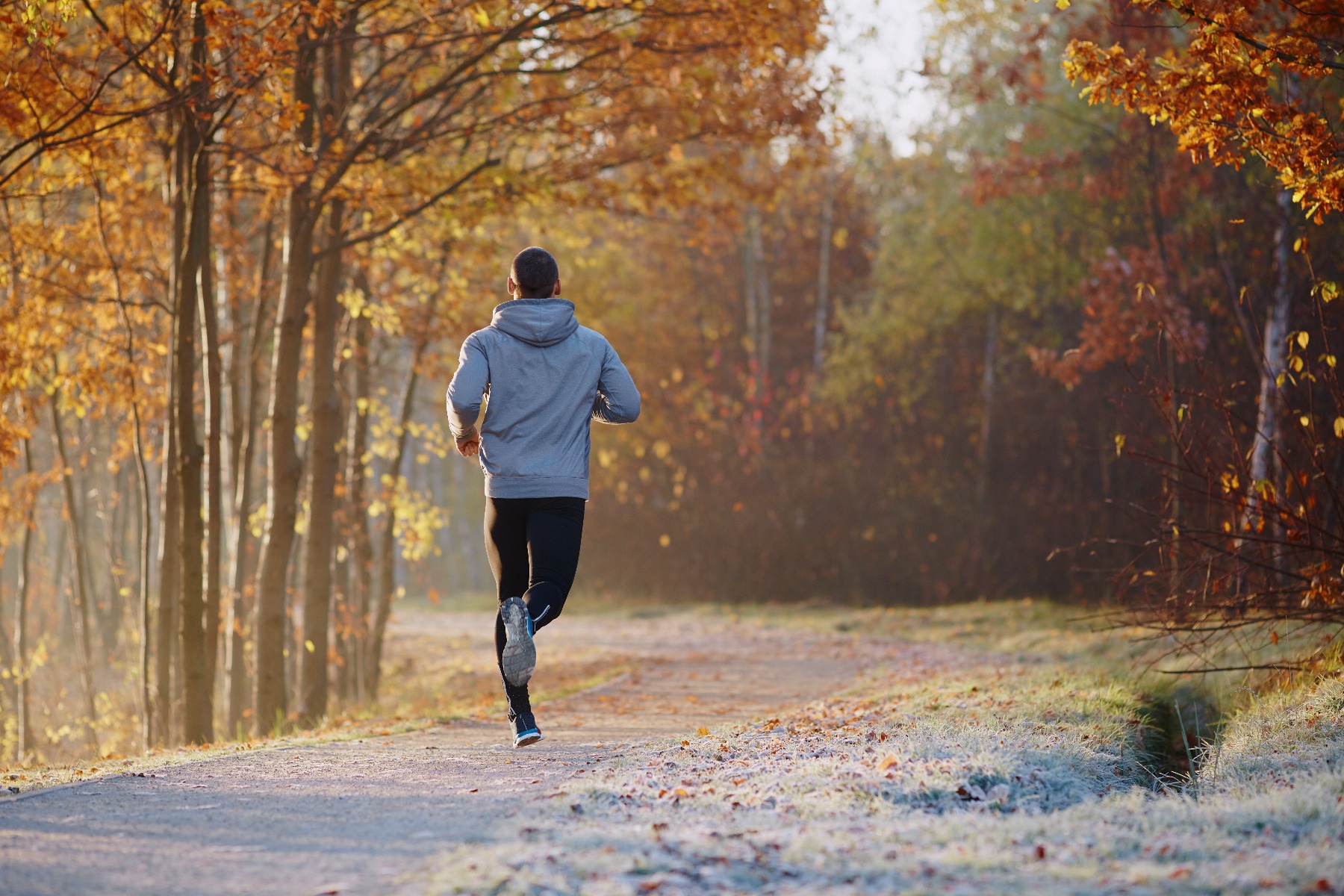

An early morning workout can help reduce blood pressure, maximizing deep sleep. However, your muscles are more likely to be stiff when your body temperature is at its lowest, which is during the first 90 minutes of waking.
For exercise that requires flexibility, schedule it for when your body temperature is at its peak which is about three hours after waking up in the morning.
Mid-Day
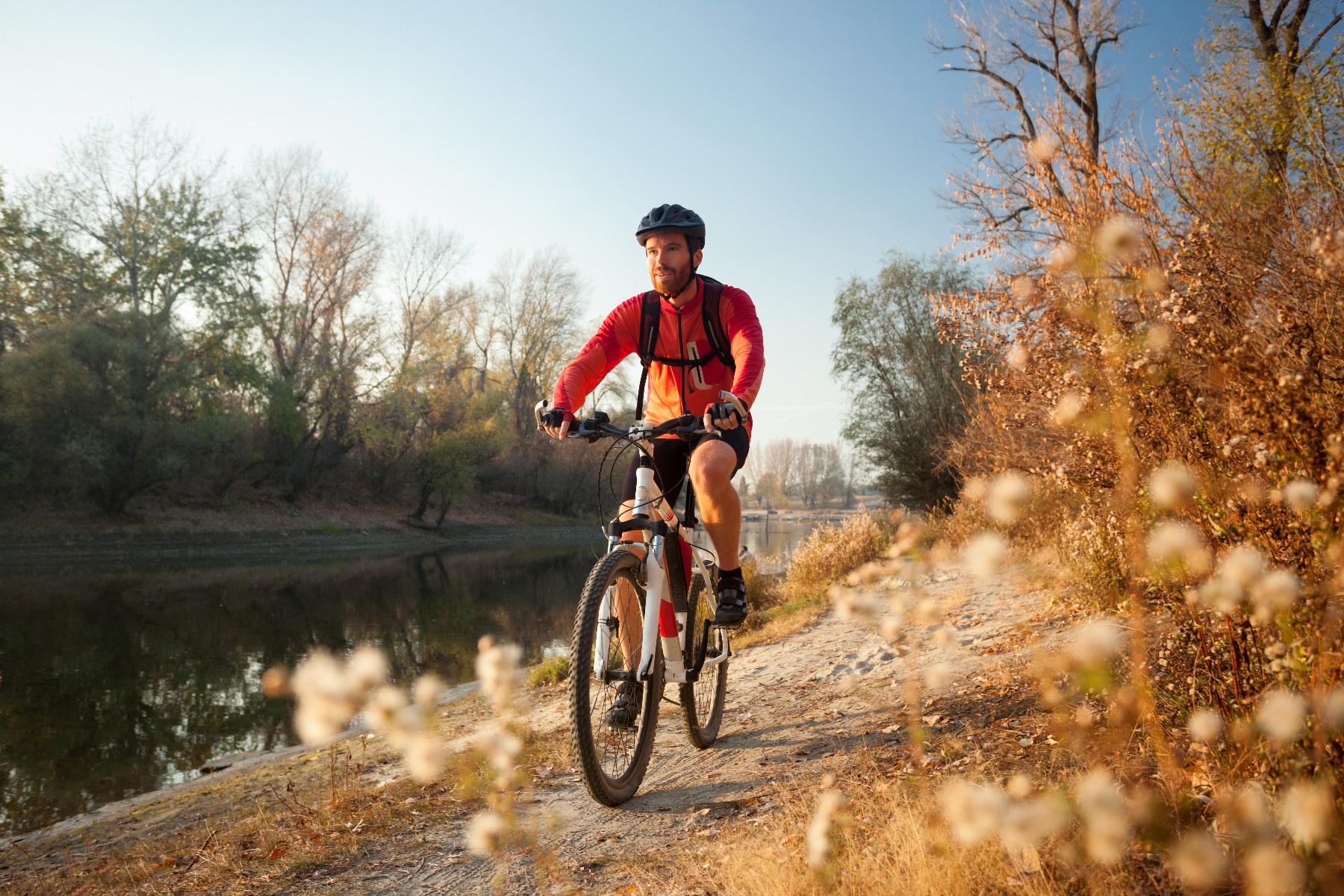

Between 2 p.m. and 6 p.m., your body temperature is at its highest.
If you exercise earlier in the afternoon, then later in the day when your internal thermostat drops back to its normal range, this can trigger feelings of drowsiness and help you drop off to sleep.
Evening
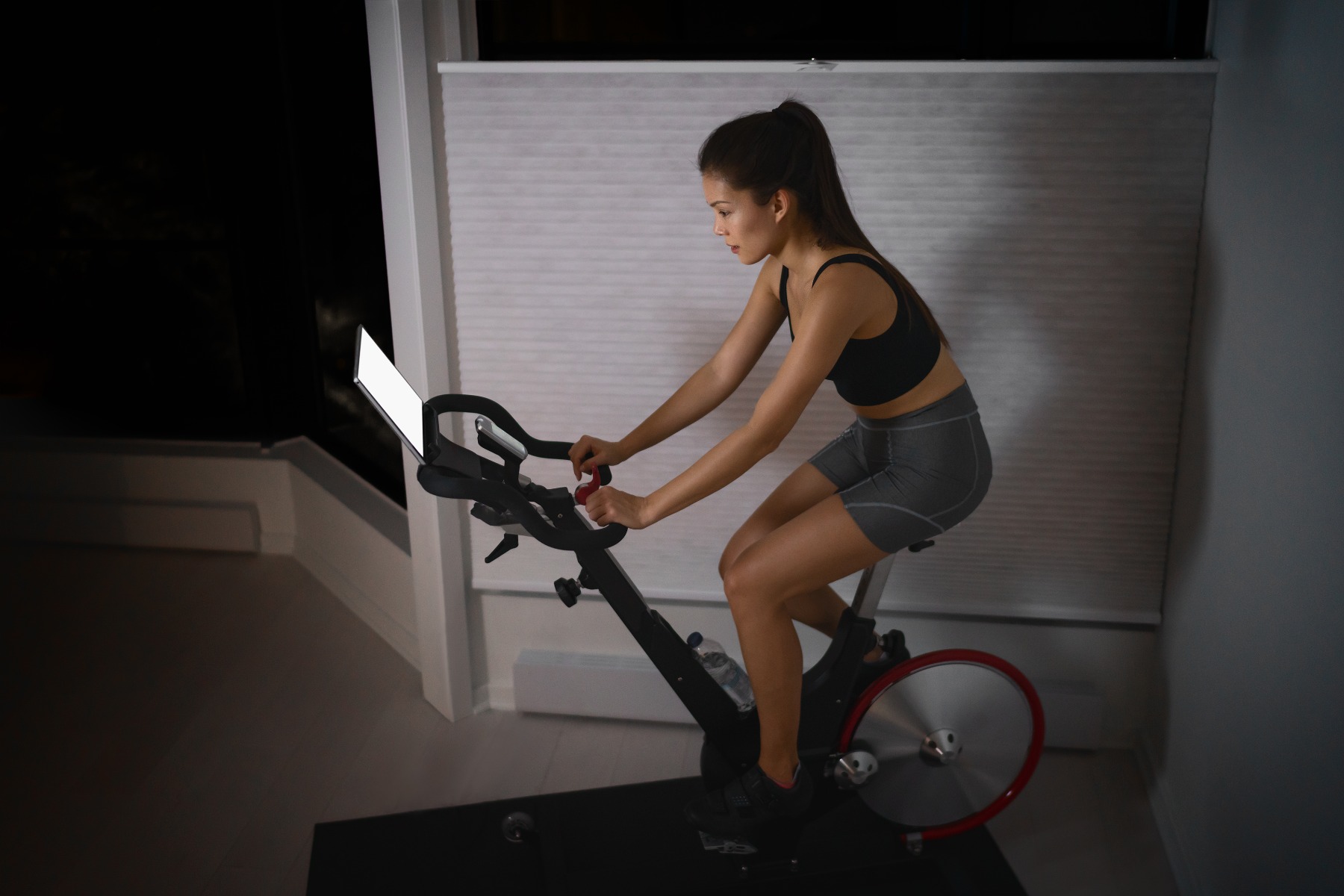

Exercising too close to bedtime may interfere with sleep. Working out too late in the day can leave you feeling energized and stimulated right before bed and delay your transition to sleep.
Similar to taking a hot bath, exercise can negatively impact your sleep quality by raising your body temperature. It is recommended that you exercise no later than three hours before bed.
After several studies, researchers have found that not only did evening exercise not affect sleep, it proved that some people fall asleep faster and spend more time in deep sleep after exercising.² However, those who completed high-intensity exercise less than one hour before bedtime, had a more difficult time transitioning to sleep.4 For those who prefer to work out in the morning, research has shown that exercise affects hormones and circadian rhythms differently than exercise at night. Establishing a consistent morning routine, whether it be stretching or a light jog, has even helped those with insomnia.
While it certainly seems like the morning is an ideal time to work out, fitting in exercise in the afternoon or evening has also been proven to improve sleep. Use the information provided above to determine when the best time is to exercise depending on your schedule!
Start a Nightly Workout Routine Before Bed
It's recommended that you work out no later than the early evening hours to give your muscles and circulatory system time to calm down and prepare for sleep. Working out too close to bed may disrupt sleep.1 Examples of exercises you can practice at home are yoga, stretching, walking, and breathing relaxation exercises or meditation.³
If you prefer to exercise outdoors, you’ll then be exposed to natural light which can also help your body establish a good sleep-wake cycle. For example, you could take an evening jog. However, vigorous exercise such as running when your body temperature is still low and your muscles and joints are more vulnerable to strain, may make you more prone to injury.
If exercise isn’t a part of your nightly routine, we’ve come up with a few mind-body exercises to help provide you with a better night’s sleep!
Plank
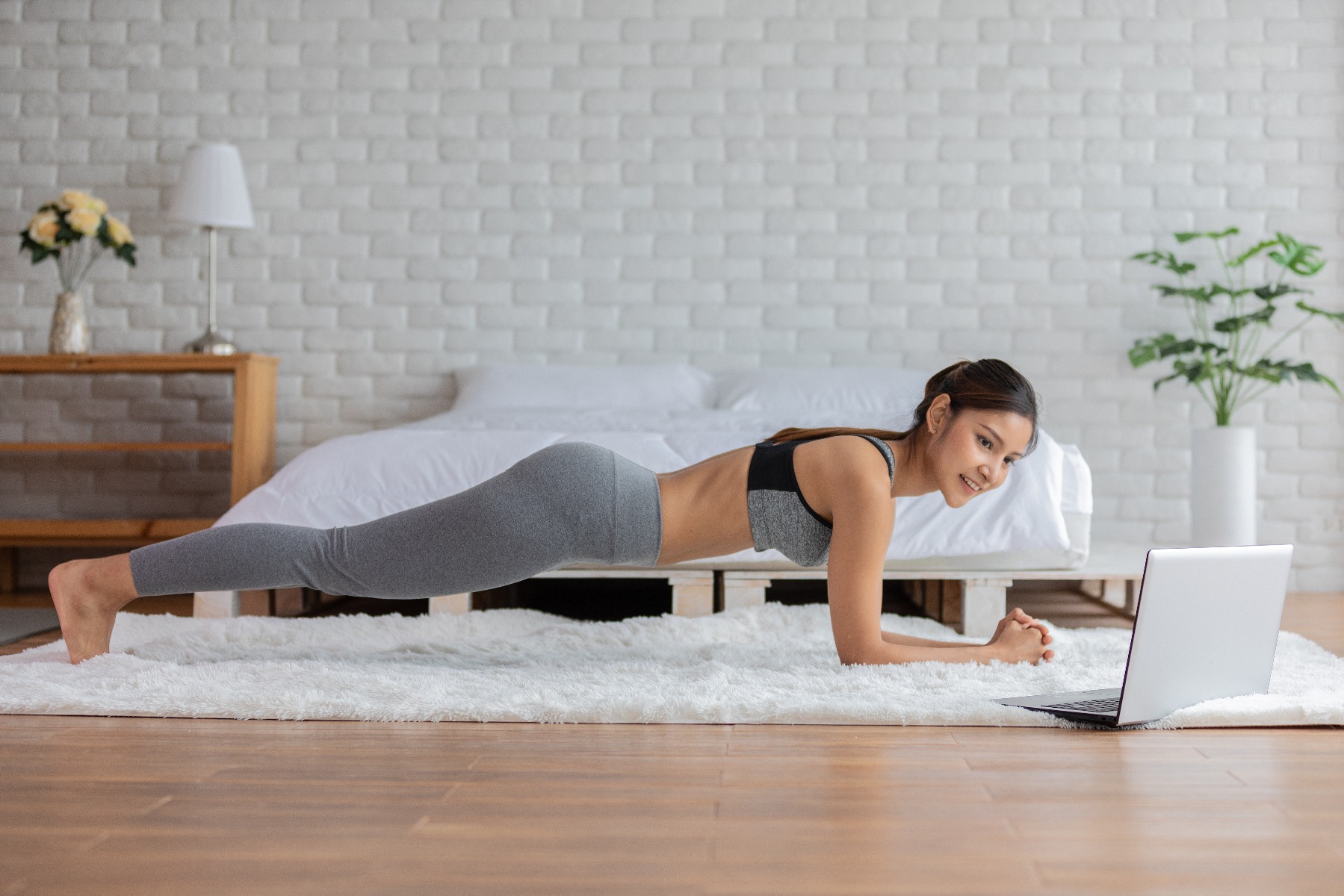
Benefit: Engaging your core muscles during a plank builds strength. A strong core can help reduce stress on the joints and help you achieve a better posture
- Begin in the plank position, face down with your forearms and toes on the floor. Make sure your elbows are directly under your shoulders and your forearms are facing forward
- Engage your abdominal muscles, drawing your navel toward your spine. Keep your torso straight and rigid and your body in a straight line
- Hold this neutral spine position for 10-15 seconds
Glute Bridge
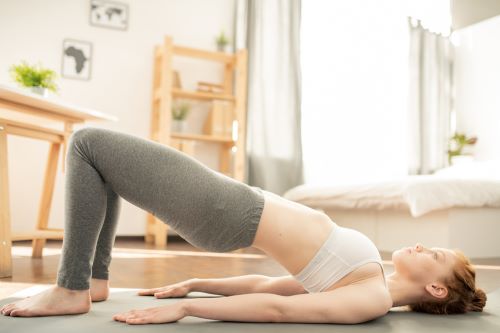
Benefit: This position stretches the hips, abductors, gluteus maximus and hamstrings
For a greater challenge, try incorporating a resistance band into the movement. Wrap the loop band around your thighs, just above your knees with your feet hip-width apart.
- Lie on your back with your hands at your sides, knees bent, and feet flat on the floor under your knees
- Tighten your abdominal and buttock muscles, pushing your low back into the ground before you push up
- Raise your hips to create a straight line from your knees to your shoulders. Squeeze your core and pull your belly button back toward your spine
- Hold this position for 10-15 seconds
Seated Side Bend
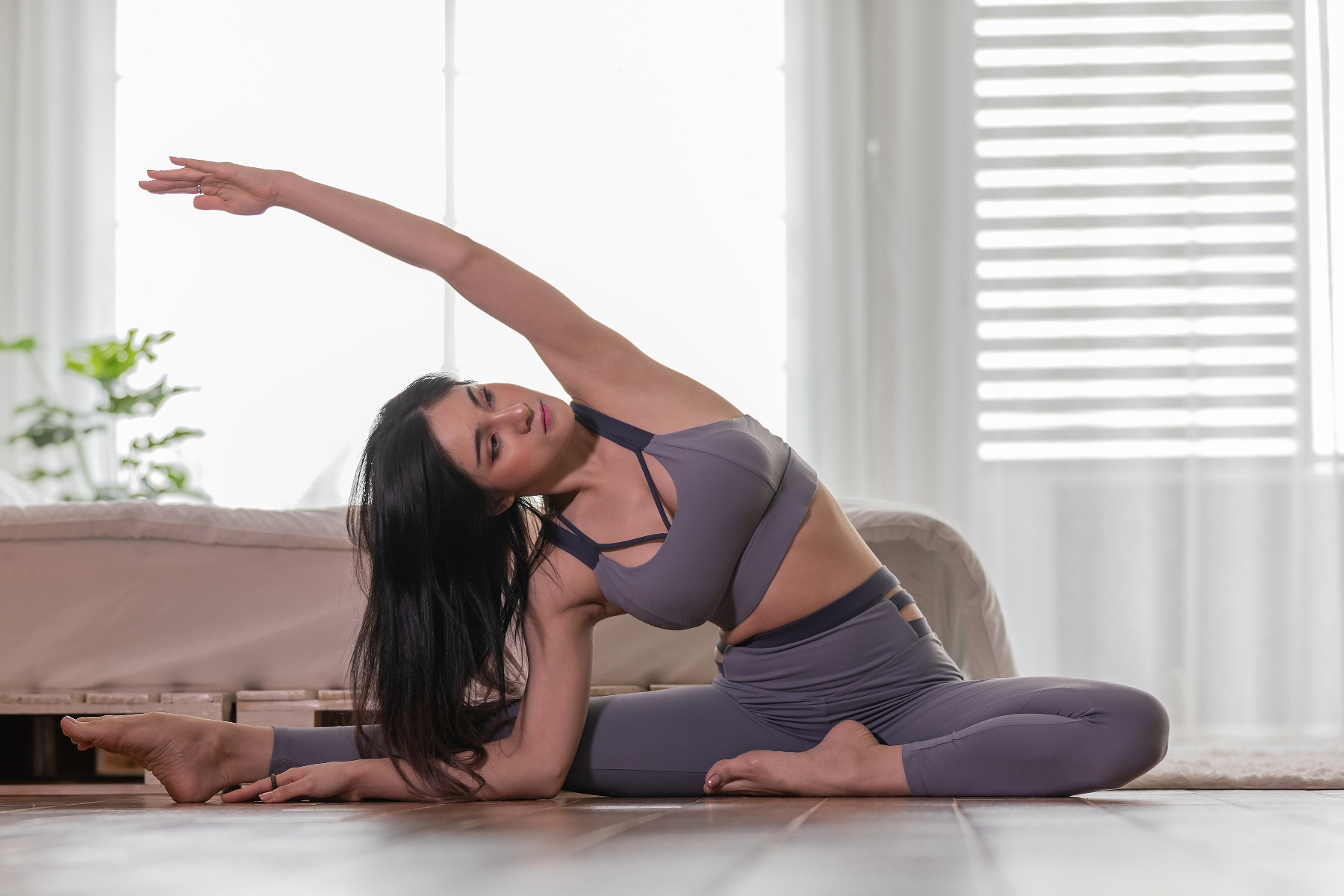
Benefits: Not only does this side bend open the hips and improve posture, but it stretches the obliques, lats, shoulders and triceps
- Begin in a seated position on the floor with arms relaxed on either side of you
- Reach your left arm long to the ceiling, on the side of your face
- Take your right hand to the ground and crawl it over to the right, allowing your right forearm to move toward the ground, then lean your torso to the right
- Open your chest open toward the ceiling and hold this position for 10-15 seconds. Repeat on opposite side
Seated Forward Fold
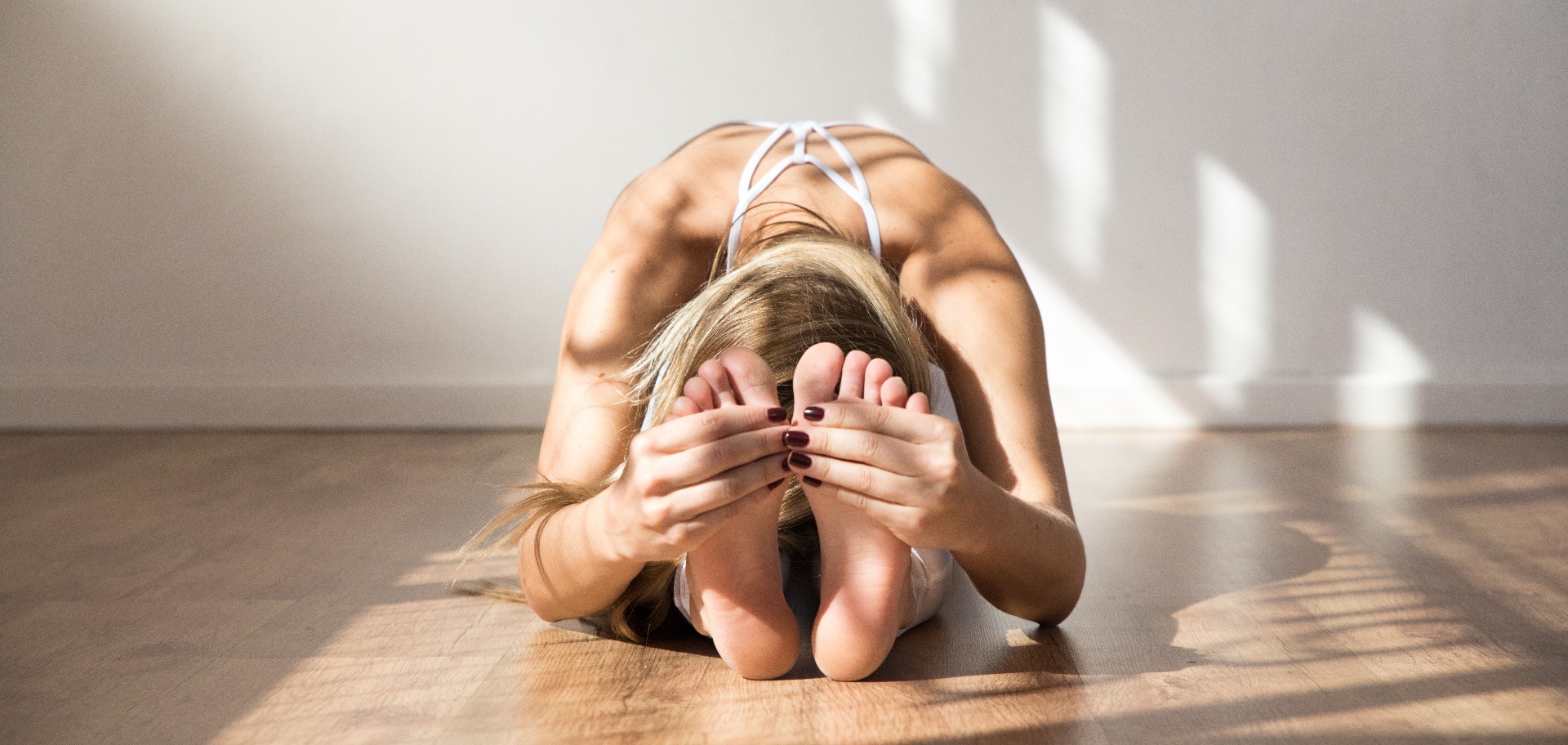
Benefits: Provides a deep stretch for the entire back side of body from the heels to the neck. This position also calms the nervous system and emotions
For a greater challenge, try incorporating a resistance band into the movement. Wrap the band around the feet and hold the ends of the band in each hand, slowly pulling the band towards you to stretch the hamstrings
- Bring your arms straight out to the sides and up over your head, reaching toward the ceiling and inhale
- As you exhale, begin to come forward, hinging at your hips.
- On each inhale, lengthen your spine
- On each exhale, deepen into your forward bend. Hold this position for 10-15 seconds. For an even deeper stretch, take hold of your ankles or shins
Child’s Pose
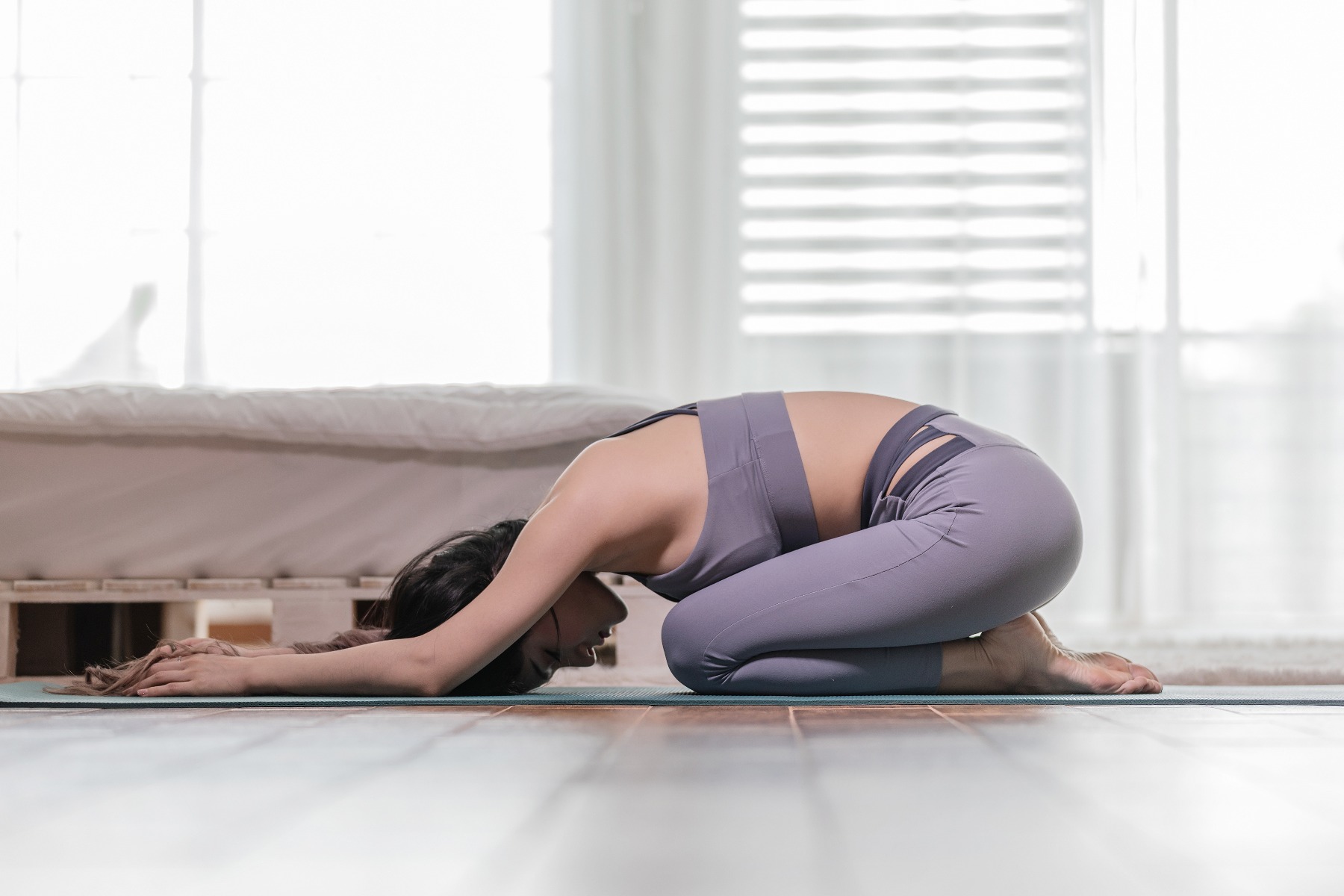
Benefits: This pose calms the body and mind, gently stretching the low back. It also massages and tones the abdominal organs and stimulates digestion
- Kneel on the floor with your toes together and your knees hip-width apart. Rest your palms on top of your thighs
- On an exhale, lower your torso between your knees. Extend your arms alongside your torso with your palms facing down
- Relax your shoulders toward the ground and hold this position for 10-15 seconds
Bird-Dog
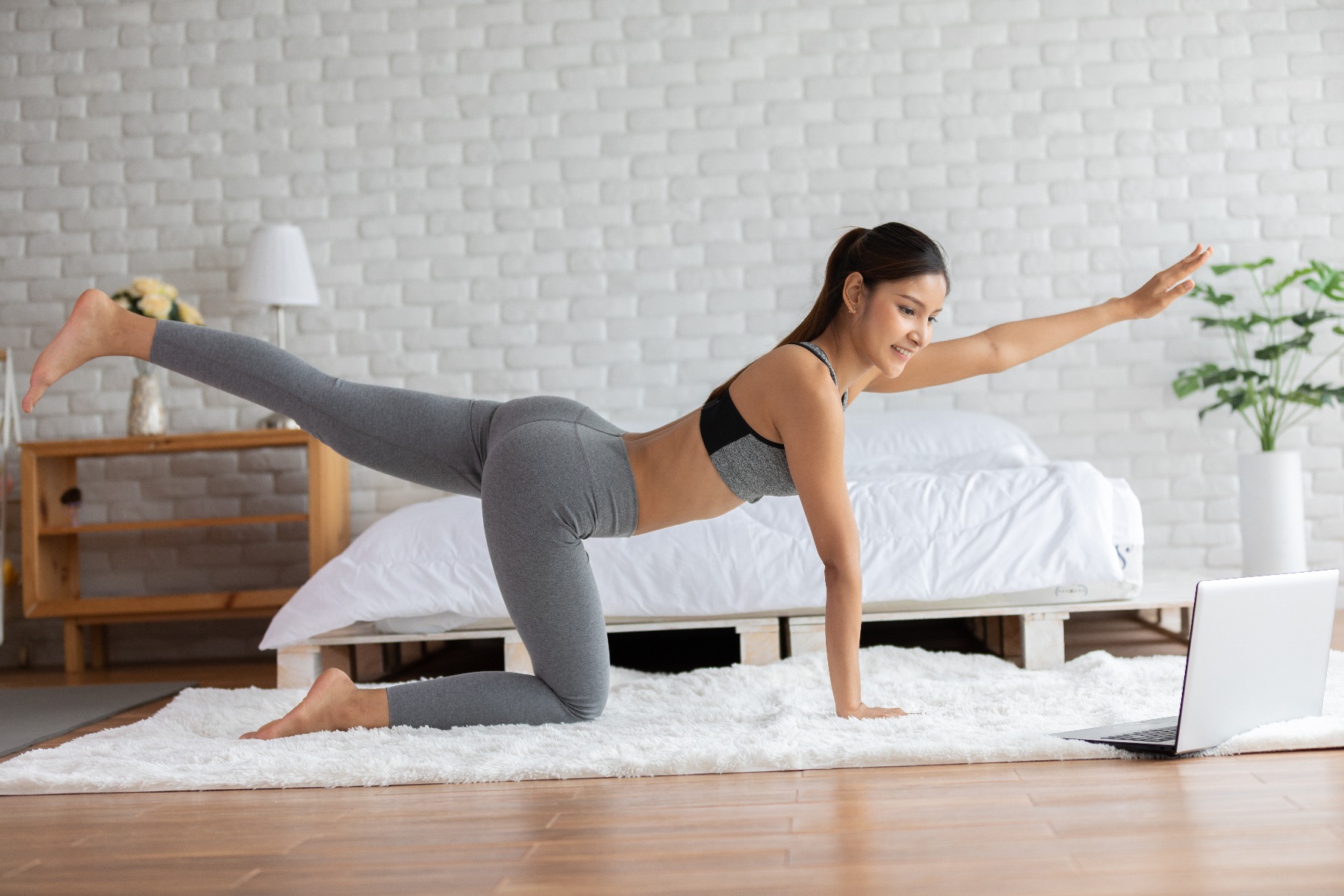

Benefit: Building low back strength, this exercise engages both the core and back muscles
For a greater challenge, try incorporating a resistance band into the movement. Secure a resistance band around the foot/ankle and hold the other end of the band in the opposite hand
- Kneel with knees hip-width apart and hands firmly on the ground about shoulder-width apart
- Lift the right arm out straight in front and extend the opposite leg behind you. You should form one straight line from your hand to your foot, keeping hips squared to the ground
- Hold for 10-15 seconds, then return your hands and knees
- Switch to the other side. Keep the abs engaged throughout the entire exercise, and work to minimize any extra motion in your hips during the weight shift
Low Lunge
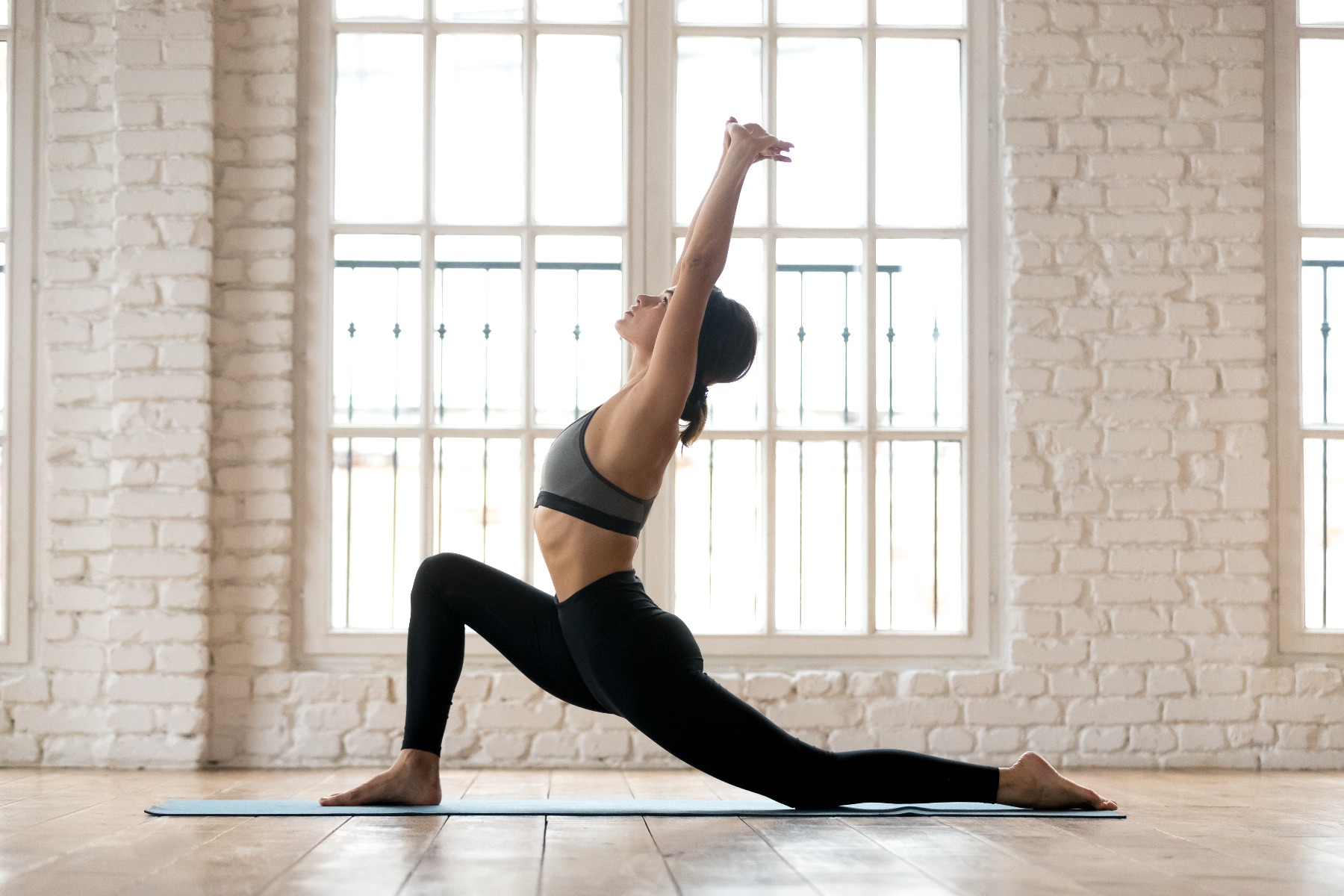

Benefit: Stretches tight quadriceps, hamstrings, groin, and hips and encourages a full range of motion in the lower body
- Start in a downward dog pose. As you exhale, step your right foot forward, between your hands
- Lower your left knee to the floor, sliding the foot back until you feel a nice stretch in the left hip and thigh
- Keep the hips low and level with each other. As you inhale, engage your lower belly and lift your chest away from the thigh, sweeping the arms up alongside your ears
- Look straight ahead or come into a gentle backbend with your gaze to your thumbs. Hold this position for 10-15 seconds
- Switch to the opposite side, coming back into a downward dog pose. Then step your left foot forward, between the hands
Let go of the stress you’ve been holding onto all day. Ease into a nightly exercise routine is by focusing the mind on stillness and bringing awareness to the breath. As the body begins to naturally relax, get ready to get a great night’s rest. Find an exercise routine that you can live with and stick with it for the long term!
References
- Anonymous. (2019). Best Workout Routine to Do Before Bedtime. Healthline. Retrieved from https://bit.ly/30Z6F42
- Stutz, J., Eiholzer, R., & Spengler, C. M. (2019). Effects of Evening Exercise on Sleep in Healthy Participants: A Systematic Review and Meta-Analysis. Sports medicine (Auckland, N.Z.), 49(2), 269–287. https://bit.ly/3IO08OG
- Breus, Michael. (2017). The Benefits of Exercise for Sleep – Your Guide to Better Sleep. Sleep Doctor. Retrieved from https://bit.ly/2FnjRYF
- Cronkleton, Emily. (2018). Stretching Before Bed: 8 Stretches to Do at Night Before Sleep. Healthline. Retrieved from https://bit.ly/2SKgrT0
Medical Disclaimer: The information provided on this site, including text, graphics, images and other material, are for informational purposes only and are not intended to substitute for professional medical advice, diagnosis or treatment. Always seek the advice of your physician or other healthcare professional with any questions or concerns you may have regarding your condition.






 US
US France
France Australia
Australia
